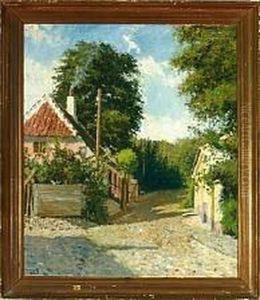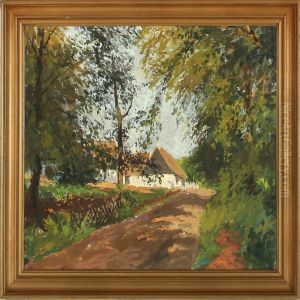Jacob Ludvig Goldmann Paintings
Jacob Ludvig Goldmann was a German architect and author who lived during the Baroque period. Born in 1673 in the city of Königsberg, which was then part of the Kingdom of Prussia (now Kaliningrad, Russia), Goldmann's contributions to architecture were primarily in the realm of theoretical works rather than built structures. His background and education in architecture remain somewhat obscure, but it is known that he became a student of the prominent German Baroque architect and military engineer, Johann Friedrich Eosander von Göthe, who was involved with the expansion of Charlottenburg Palace in Berlin.
Goldmann's significance in the history of architecture comes from his theoretical treatises rather than extant buildings. He wrote several architectural treatises that were influential in spreading the ideas of Baroque architecture throughout Germany and beyond. One of his most important works is the 'Vollständige Anweisung zu der Civil Bau-Kunst' (Complete Instruction in Civil Architecture), published posthumously in 1711. In this treatise, Goldmann elaborated on the principles of Baroque architecture, emphasizing the importance of symmetry, proportion, and the grandeur of design. His works were particularly noted for their systematic approach to architectural design and for their illustrations, which reflected the contemporary Baroque aesthetic.
Despite his potential, Jacob Ludvig Goldmann's career was cut short by his premature death in 1711 at the age of 38. The reasons for his early demise are not well-documented, but his passing was a loss to the architectural community of the time. Goldmann's legacy persists through his written works, which continued to be studied and referenced by architects and scholars in the generations that followed. His treatises contributed to the dissemination of Baroque architectural principles in Northern Europe, particularly in areas under German influence, and they are still regarded as valuable historical sources on Baroque architectural theory.

